
Time is running short to protect biodiversity. Image generated using ClipDrop.Ai.
By Mariana Meneses
According to the World Wildlife Fund (WWF), extinction rates are currently estimated to be 100 to 1,000 times higher than the natural background rate, and they are climbing rapidly.
Some species are especially vulnerable to extinction because they depend on a relatively small number of individuals or a particular habitat or food source. Human activities such as hunting, poaching, agriculture, mining, urbanization, and deforestation frequently diminish or eliminate habitats, leading to population declines and eventual extinction. Research shows that, because of human activity, we may be entering the 6th mass extinction on Earth.
According to National Geographic, overharvesting, deforestation, overfishing, and land conversion are among the leading causes of the alarming rate of biodiversity loss.
The delicate balance within ecosystems, where different species depend on each other, is being disrupted. These ecosystems play a critical role in providing essential services such as air purification, nutrient cycling and water filtration, all of which contribute to human existence. Moreover, the destruction of biodiversity raises the risk of zoonotic diseases, which are illnesses that are transmitted from animals to humans.
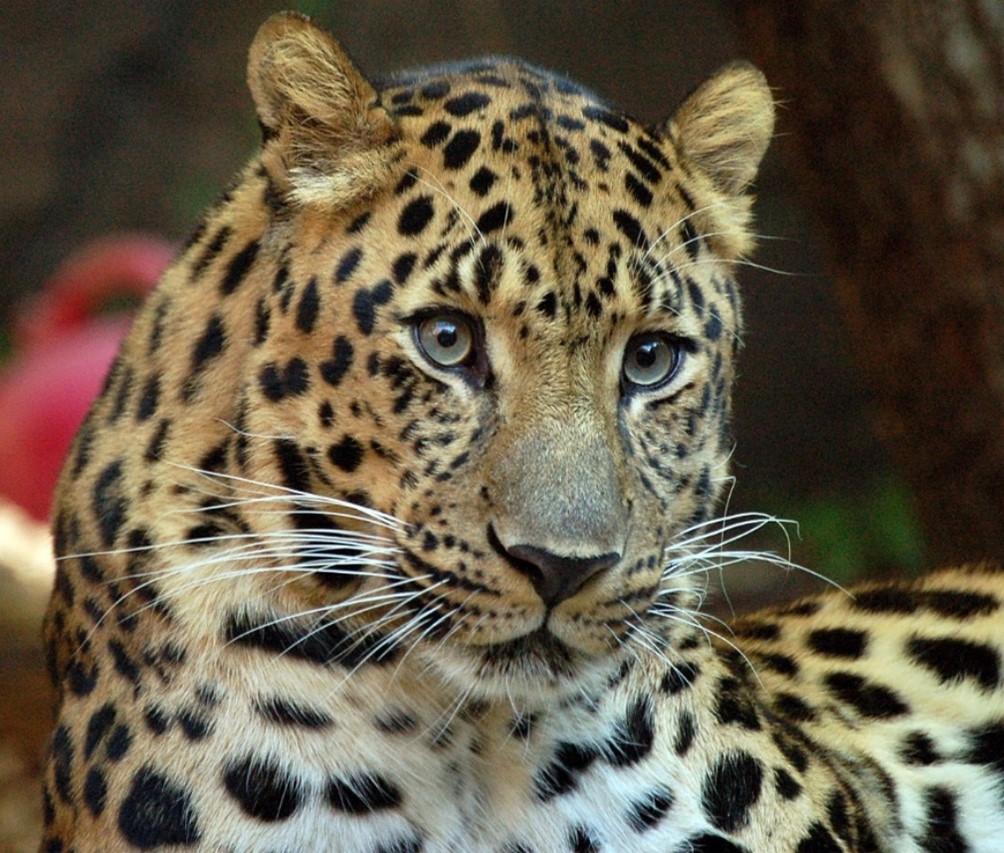
“The Amur leopard is one of the rarest big cats in the world, with only a few individuals left in the wild. The remaining Amur leopards face multiple threats to their survival, including habitat loss and fragmentation and prey scarcity.” (WWF). Image: Willow Grove.
The loss of biodiversity also presents a significant threat to our ability to discover revolutionary drugs, and disrupts the very ecosystems that support human health.
Many of the drugs we rely on today are derived from natural substances found in plants and animals. Traditional medicine, which continues to be a vital part of healthcare for many people, heavily relies on natural remedies and nature-derived medications. The loss of biodiversity is posing increasing challenges in accessing these valuable natural resources.
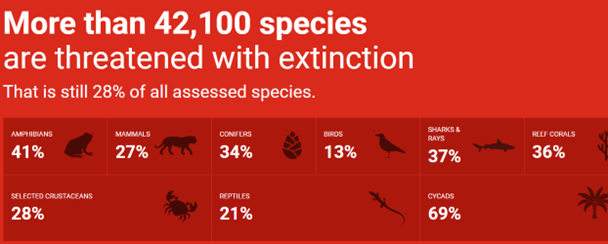
To address the extinction crisis, solutions such as rewilding, agroforestry, and sustainable land and ocean management have been proposed, but meaningful action is necessary to fulfill commitments made towards protecting biodiversity. Image: International Union for Conservation of Nature’s Red List.
One major driver of biodiversity loss is climate change, which damages ecosystems and disrupts interactions between species.
As a result, some species have to adapt or migrate to survive, while others face extinction. Biodiversity loss also causes further climate change, for example by releasing carbon from areas like the Amazon rainforest, thus contributing to a feedback loop. Tackling biodiversity loss requires a comprehensive approach that recognizes the interconnected nature of the problem and addresses the root causes, including the scale of human population growth and consumption that drives human activities.
The World Health Organization warns that pollution from human activities such as industrialization, transportation, and agriculture, can cause declines in biodiversity by degrading habitats and reducing the quality of the air, water, and soil.
For example, plastic pollution in the world’s oceans is causing harm to marine wildlife such as turtles, whales, and seabirds through ingestion and entanglement in plastic debris. Air pollution can cause respiratory problems in animals and humans and contribute to the decline of plant species. Oil spills and chemical pollution can lead to harmful effects on ecosystem health and biodiversity through contamination of habitats, food webs, and water sources, with long-term consequences. Loss of biodiversity from pollution also has economic consequences for industries that rely on natural resources and services, such as tourism, fisheries, and agriculture.
To reduce the damage that pollution causes to biodiversity, proactive measures are needed.
These can include regulating emissions, promoting sustainable practices, cleaning up pollution sources and protecting habitats, and conducting more research on the effects of specific pollutants on species and ecosystems.
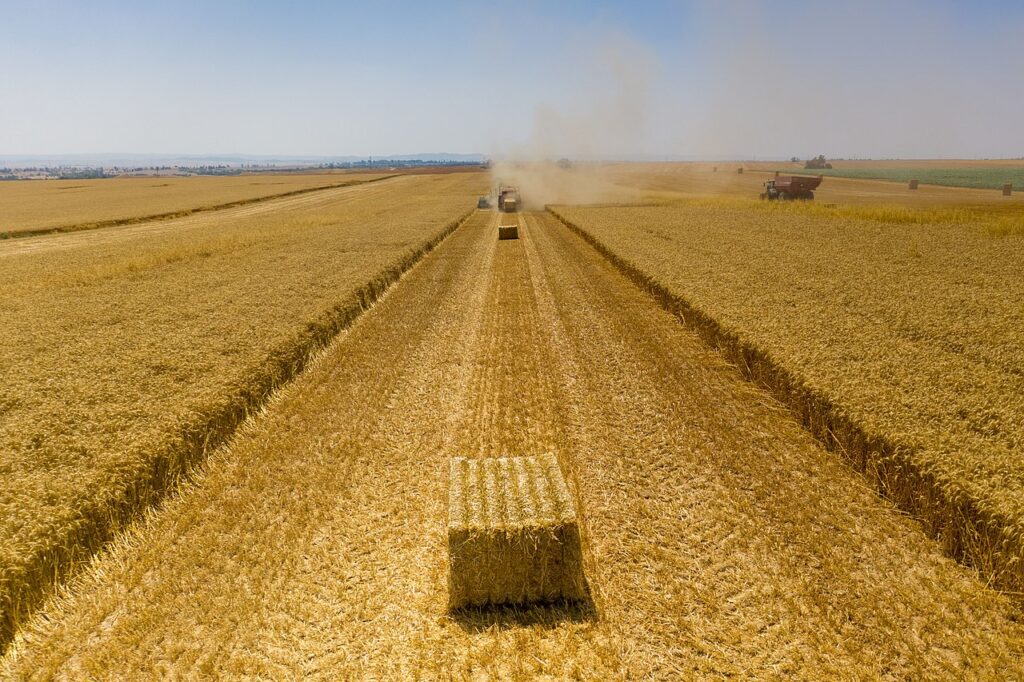
Wheat harvest: Wheat is a worldwide staple for food, produced on over 200 million hectares of land. Wheat is the second most common cereal, after maize. Source: Wikimedia Commons.
Agriculture is one of the greatest threats to biodiversity in the world.
According to the United Nations Environment Programme, our global food system is the primary driver of biodiversity loss.
However, farmers can take measures to promote biodiversity while still maintaining productivity. For instance, by implementing sustainable practices that enhance the biodiversity of soils, farmers have the potential to generate significant advantages for food and water security, as well as for mitigating and adapting to climate change. Also, planting hedgerows and cover crops provides habitats for beneficial insects and improves soil health. Additionally, using integrated pest management techniques to reduce the use of pesticides can help decrease the loss of non-target species.
Incorporating biodiversity conservation practices into land management is essential for preserving healthy ecosystems and securing food supplies for future generations.
By promoting sustainable agriculture, we can maintain biodiversity while also increasing productivity and building long-term resilience. Furthermore, consumers can also play an important role in supporting biodiversity by choosing products that are grown sustainably and produced with consideration for the environment.
Climate change also accelerates biodiversity loss by enabling the spread and establishment of invasive alien species (IAS).
According to the International Union for Conservation of Nature, IAS are introduced to new areas outside their natural habitat, causing harm to native biodiversity, ecosystem services, and human well-being. To address this issue, it’s crucial to include management of IAS in climate change policies, implementing biosecurity measures to prevent their introduction to new regions due to climate change, and employing rapid response measures to monitor and eradicate potentially invasive alien species.

The northern white rhinoceros (Ceratotherium simum) is a subspecies of white rhinoceros that lived in countries such as Chad, Sudan, and Uganda. The main reason for their extinction in 2018 was poaching for their horns. (Wildlife Informer). Image: Wikimedia Commons.
Wildlife trade is a multi-billion-dollar industry that puts species at risk of extinction and fuels habitat destruction.
The United Nations Office on Drugs and Crime highlights many implications of wildlife trafficking.
Animal and plant species are traded for pets, luxury goods, traditional medicines, or exotic foods, and their removal from the wild can lead to local and global extinctions. For example, the demand for elephant tusks leads to illegal poaching and trafficking, causing a decline in elephant populations. To combat illegal wildlife trade, it is essential to strengthen enforcement mechanisms, increase public education, and promote the use of alternative products. It’s important to note that scientific research shows that the combined impacts of deforestation and wildlife trade on tropical biodiversity are severely underestimated.
TQR writer, Dr. Saulo Silvestre is a dedicated biologist with a PhD in Tropical Biodiversity and is actively engaged in vital conservation work within the heart of the Brazilian Amazon rainforest.
With his extensive background and experience, he offered valuable insights into our interconnectedness with the natural world. As Saulo aptly puts it:
“The planet operates as a closed system. Our human existence relies on a vast interconnected web formed by the various components of the biosphere, including other species of living organisms and abiotic factors like resources and environmental conditions (such as temperature and pH, which is a scale that measures how acidic or basic a substance is – for instance, water or soil -, and that affects the availability of nutrients and the survival of organisms), their interactions among themselves, and their effects on one another. Each time humanity directly or indirectly triggers the extinction of a species or habitat, it’s akin to pulling a thread from the very fabric we’re lying on. Sooner or later, we’ll find ourselves falling.”
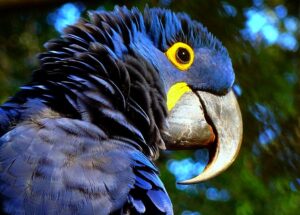
“The hyacinth macaw (Anodorhynchus hyacinthinus), is a parrot native to South America. Habitat loss and the trapping of wild birds for the pet trade have taken a heavy toll on their population in the wild, so the species is classified as Vulnerable on the International Union for Conservation of Nature’s Red List, and it is protected by the Convention on International Trade in Endangered Species of Wild Fauna and Flora.” (Wikipedia). Photo: Ana Cotta.
A 2022 study by Lucia Bosone and Raquel Bertoldo, identifies several potential barriers to implementing effective conservation behaviours.
This includes individuals’ perceptions of powerlessness, fatalistic visions of environmental degradation, mistrust of information sources, and uncertainty or skepticism of human causes of climate change.
To overcome these barriers, the study suggests that it is important to provide clear and accurate information about the benefits of conservation in reducing biodiversity loss, to help to overcome public resistance. Additionally, promoting a sense of individual empowerment and highlighting the positive results of individual actions can help to overcome perceptions of powerlessness. Finally, building trust in the sources of information and promoting a sense of collective responsibility can help to overcome mistrust and fatalistic visions of environmental degradation.
According to the researchers, increasing public connection with nature can help promote conservation actions in several ways.
- First, it can increase understanding of the importance of biodiversity and ecosystems, which can lead to a greater willingness to engage in conservation.
- Second, it can promote a sense of personal connection and responsibility towards nature, which can increase motivation for its protection.
- Third, it can increase individuals’ sense of well-being and satisfaction, which can lead to a greater willingness to engage in pro-environmental behaviors.
- Finally, it can help to overcome some of the psychological barriers that can prevent engagement in conservation.
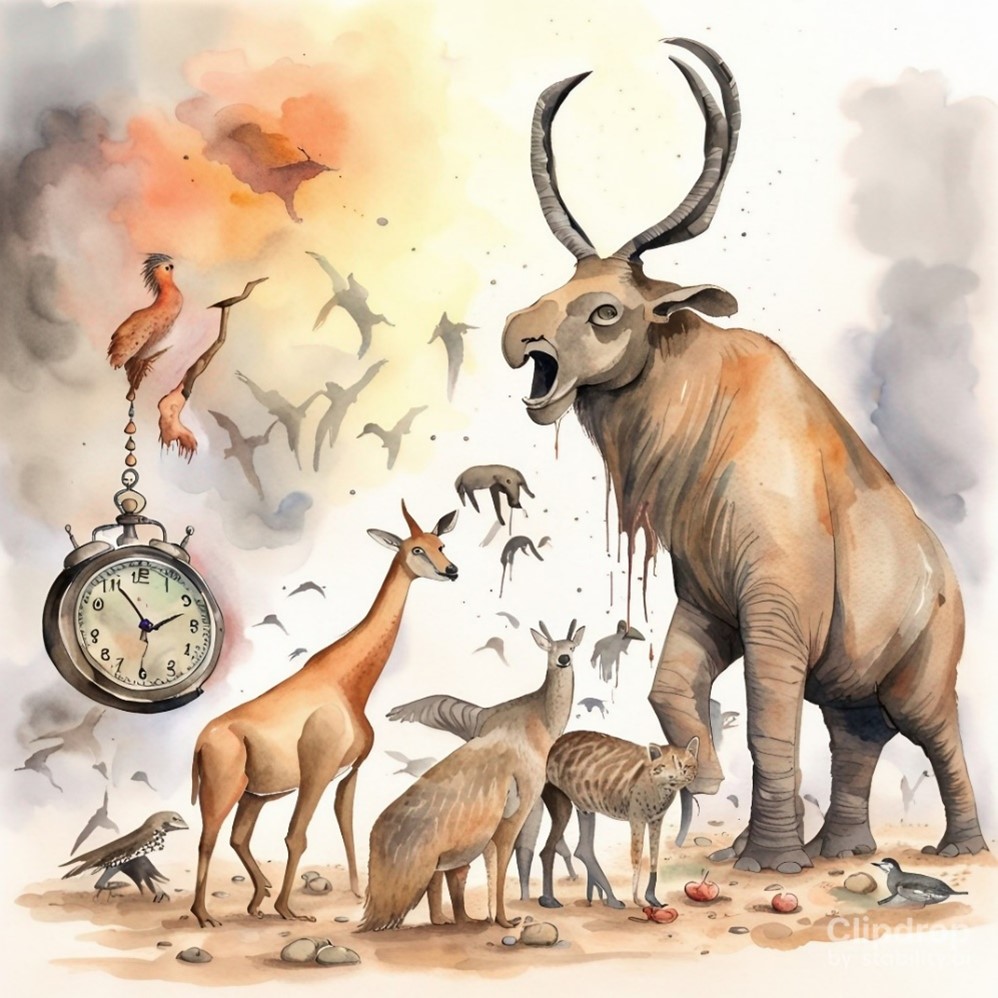
We may be running out of time to preserve biodiversity. Image generated using ClipDrop.Co.
Nicole Redvers and co-authors of a 2020 study argue that we need to consider an Indigenous paradigm:
“Pandemics and global environmental change, including climate change, are all consequences of not following the Natural Laws that are encapsulated by the interconnected nature of the universe.”
The interconnectedness of the universe means that actions taken in one part of the world can have far-reaching and often unpredictable effects on other parts of the world. Therefore, not prioritizing balance and respect for the Earth and its great variety of life can lead to imbalances and disruptions in the natural systems that sustain all life on the planet. By contrast, following what the authors call “Natural Laws” can promote harmony and balance between humans and the environment, which is essential for maintaining planetary health.
To understand and preserve nature’s operation, more exploration is required.
Martha Henrique, for BBC Future, discusses how the vast depths of the Earth’s oceans remain largely unexplored, with only a small fraction of the marine species known to science.
As the threat of deep-sea mining and climate change looms, scientists are racing against time to discover and document unknown species before they face extinction. The ocean’s ecosystems are on the verge of transformation, and understanding their biodiversity is crucial for conservation efforts. While estimates suggest there could be up to two million species yet to be discovered in the oceans, current knowledge is limited to fewer than 250,000 species.
The urgency to explore the oceans intensifies as the potential harms of deep-sea mining become a reality, highlighting the need to understand and protect these fragile ecosystems before they are irreversibly altered.
In a 2022 study, Angela J. Dean and Kerrie Wilson show that hope and optimism are positive contributors to conservation efforts. Let us, therefore, inspire hope in others to pursue the goal of planetary health, which in turn can ensure the continuation of human life on Earth.
Interested in exploring related topics? Discover these recommended TQR articles.
- Life Is Defined by Biology, Not Physics
- Mega-trees: The Critical Role and Vulnerabilities of Nature’s Giants in Forest Ecosystems and Climate Change Mitigation
- New Light on Nature’s Technology Connects Plant-Microbe Interactions and Climate Change
- Playing Jenga with the world: the feedback of human activities on the trends of extreme weather events worldwide
- Saving the Planet: Nobel Prize Recognizes Climate Science, but Will Mindsets Change in Time to Sustain Nature’s Potential and Value?



